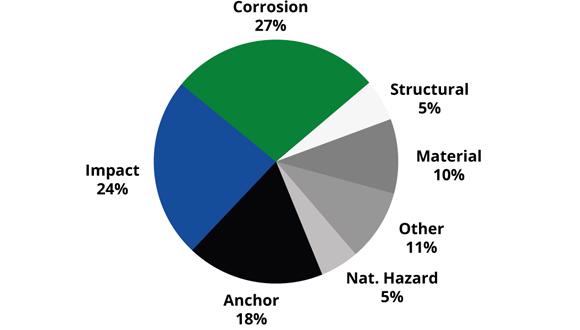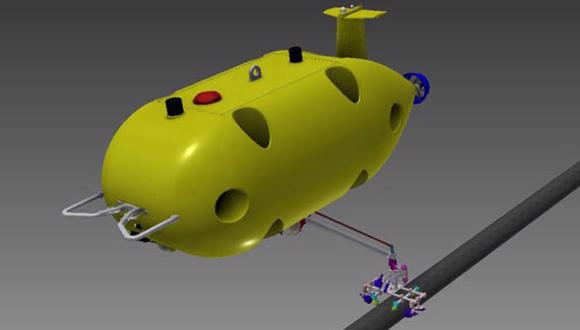Tue, 15 January, 2019
Workshop Registration
More information and Registration details here
What are the biggest risks to subsea structures? Third party threats (such as impact or anchoring) and corrosion (internal and external) constitute nearly 70% of risk factors associated with subsea structure operation.
Inspection and maintenance are critical to avoiding failures. For deep-water applications. This has led to increasing deployment of UUVs (Unmanned Underwater Vehicles).
Current Technology
Remotely Operated Vehicles (ROVs) have been used extensively for over 40 years. Vehicle classifications/capabilities move from basic video observation to include additional systems such as cathodic protection probes, sonar transponders, manipulators and tools.
Companies including SAAB SEAEYE, Ageotech/Lighthouse and Oceaneering International offer solutions that feature a range of inspection systems, capable of operating down to depths in the order of 3000m. ROV platforms however, demand highly skilled teams, who must operate in harsh conditions – whose performance relies on significant levels of training and experience.
Future Developments
AUVs
Advances in both hardware and software technology has led to the natural evolution of autonomous unmanned vehicles (AUVs) for subsea inspection. This encompasses hybrid systems such as the Seaeye Sabertooth (combining ROV/AUV capability), and recent work to develop AUV platforms by Total and Kawasaki Heavy Industries.
NDT Technology
Subsea inspection can be performed either internally (for pipelines) or externally, as continuous or local inspection. The following inspection capabilities are becoming essential to implement and develop: Visual, ultrasonic testing (UT); for wall thickness, eddy current testing, magnetic particle inspection, guided wave pipeline inspection (GWPI) and cathodic protection (CP) measurement.
The application of UT tends to be limited to pigging systems, crawlers and divers. TWI has recently focussed development on EMATs systems – which rely on the generation of ultrasonic waves from an arrangement of a coil in an electromagnetic field that forms an electroacoustic transducer.
Where applicable, such systems have the advantage of 100% screening coverage of a pipe wall (360 degrees around the pipe), non-contact through coatings, good sensitivity to corrosion and in-service inspection (no production shutdown). The combination of EMAT as a qualitative evaluation tool with quantitative follow-up using ultrasonics has proved to be a rapid and accurate combination.
Industry / Your Needs
One challenge for technology providers, and research organisations alike (including TWI); is to effectively identify the key industry needs and related technical barriers to overcome as part of future R&D programmes.
Define your requirements > Direct our Research and Development:
TWI is looking to hold a workshop in Aberdeen on 8th February (just after the Aberdeen Subsea Expo), with the primary objectives of defining key challenges and operating requirements for inspection systems, in order to guide the R&D of new technologies. A report summarising the outcome of the workshop will be shared with all attendees.
You can also review/complete this questionnaire, and we will share the results – key industry needs - with you in the coming weeks.
 Risk factors associated with subsea structure operation.
Risk factors associated with subsea structure operation.
 Kawasaki underwater inspection AUV prototype concept.
Kawasaki underwater inspection AUV prototype concept.